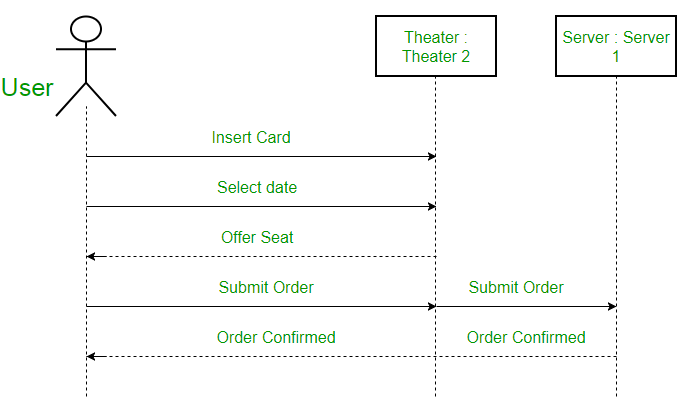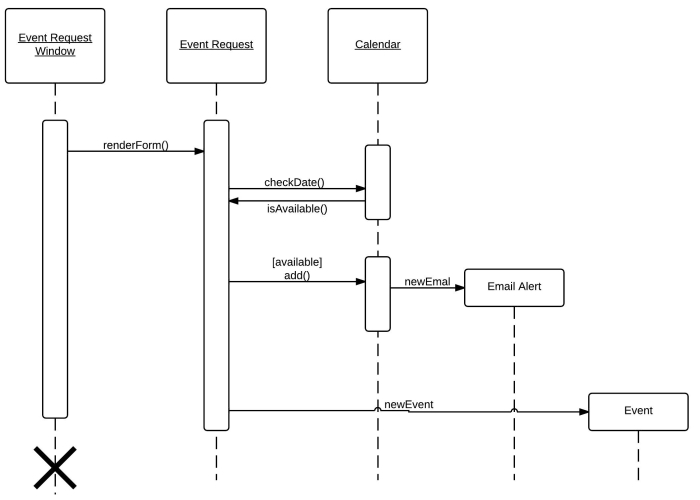

- #SAMPLE SEQUENCE DIAGRAM FOR NETWORK INSTALL#
- #SAMPLE SEQUENCE DIAGRAM FOR NETWORK CODE#
- #SAMPLE SEQUENCE DIAGRAM FOR NETWORK DOWNLOAD#
- #SAMPLE SEQUENCE DIAGRAM FOR NETWORK FREE#
When code runs in a loop, you’ll see a Loop box enclosing the repeated behavior. The right-to-left arrows are the return values. From there, the code flows to the controllers package, then through helpers, models, to the database, and through views.Įach left-to-right arrow is an HTTP server request, function call, SQL query, or HTTP client request. (Are you feeling adventurous? Try generating AppMaps of Mastodon!).įrom left to right, you see the inbound HTTP server request POST /login. Here’s a sequence diagram that I generated from the Rails Sample App 6th Edition. You’ll see a brief progress indicator, and then your diagram will open in the browser! Once you've seen the generated diagram, you can customize its behavior using these options. The first time through, just hit Enter to accept the defaults. Choose “AppMap View: Generate Sequence Diagram”. You’re ready to generate a sequence diagram! Open the AppMap view by clicking the icon in the extensions sidebar, then right-click an AppMap to open the context menu. Then search for “AppMap Sequence Diagram” and configure the location of the PlantUML JAR. Once you’ve set up your project, commit the AppMap configuration changes to Git so that other members of your team can use AppMap without having to go through the setup process themselves. You’ll be prompted to configure your project for AppMap, if you haven’t done so already. Start by installing the AppMap extension from the VSCode Marketplace. Note You can find copies of all the files used in this blog post in this Gistįirst, using the VSCode extension - because it’s a bit easier.
#SAMPLE SEQUENCE DIAGRAM FOR NETWORK INSTALL#
On MacOS, you can simply run brew install java. Note You'll also need to have java available. The rest of this post will assume that you’ve saved this file as ~/Downloads/plantuml.jar.
#SAMPLE SEQUENCE DIAGRAM FOR NETWORK DOWNLOAD#
So, before proceeding, download the PlantUML JAR file the latest version at the time of this writing is plantuml-1.2022.13.jar. In both cases, the AppMap tools will generate a PlantUML file, which will then be rendered as SVG. Once you’ve recorded a test case or an interactive session, you can use either the AppMap CLI or the AppMap extension for VSCode to generate a sequence diagram. AppMap can record both test cases and live application API requests, so you can use either technique to acquire the diagram data. You can use AppMap with Ruby, Python, Java and JavaScript - you can find AppMap setup instructions here.
#SAMPLE SEQUENCE DIAGRAM FOR NETWORK FREE#
For this, we’ll use AppMap, a free and open source runtime code analysis tool that I created. In order to generate a diagram of the code behavior, we need to record exactly what happens as the code runs. Run your app and interact with it, either through its UI or by sending API requests from a tool like Postman.So the first step in generating a sequence diagram is to run your code through a particular flow. Note Would you prefer to watch rather than read? Check out "Auto-magically generate sequence diagrams of your Rails App using VSCode" on YouTubeĪ sequence diagram illustrates a particular code flow, like an HTTP request or the processing of a job. What if you could have the best of both worlds - sequence diagrams, with no effort? Read on, to learn how you can generate sequence diagrams just by running your code. And, being documentation, diagrams-as-code still suffer from the achilles heel of documentation, namely - getting out of date. Think: Markdown for diagrams.īut while it’s fairly easy (and rewarding!) to create sequence diagrams using text files, it still takes effort.

But accordance with the “everything as code” movement, tools like PlantUML and Mermaid have kept sequence diagrams relevant by providing a fairly basic text language that can be used to generate sequence diagrams. Historically, creating a sequence diagram required specialized software. Or, keep reading to see how we first developed this feature using AppMap and PlantUML 👇 👇 👇 Read more about AppMap interactive sequence diagrams for JetBrains. Update! April, 2023 We now have developed a new version of this feature, which is fully interactive and doesn't require Java or PlantUML. And they are one of the best tools for developers and technical non-developers (like engineering managers and product managers) to use when discussing code design. Their inherent structure - objects flowing across the page, time flowing down the page - is intuitive and easy to learn. Sequence diagrams are frequently described as "the best part of UML".


 0 kommentar(er)
0 kommentar(er)
